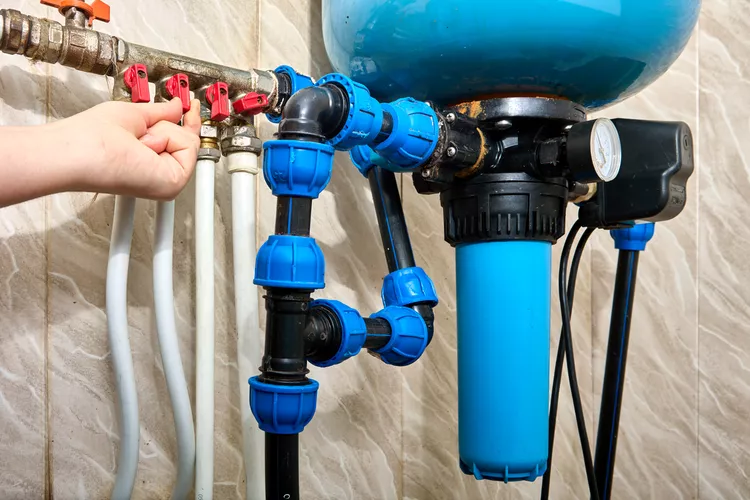What Is a Whole-House Water Filter, and Do I Need One?

Unfortunately, some tap and well water carries contaminants, and even when the water is properly cleaned, unwanted additives can come from old hardware in the pipe systems. At-home filtration systems can improve water quality. They remove chemicals and pollutants, improve the smell and taste of water, and protect home plumbing.
The most affordable and popular options are pitcher and faucet filters that clean cooking and drinking water, but you might need a more robust system. A whole-house water filter purifies water where the main water line enters your home. It ensures that water flowing from every tap, faucet, or showerhead is freshly filtered.
Because whole-house systems work throughout an entire home, they are expensive. Before buying one, you need to know how it works and its limitations.
What Is a Whole-House Water Filter?
A whole-house water filter is a filtration system that removes specific contaminants from the water that enters your home. It is typically positioned near the water shut-off valve to your home so it catches water at the source of your existing plumbing line. Different types of water filters target common contaminants in your home’s water.
For example, you may want to reduce water hardness, remove sediments, or eliminate the smell of chlorine. A whole-house water filter allows you to hone in on these specific problems and correct them directly at the point of entry (POE).
Where Drinking Water Comes From
Drinking water that reaches your faucet begins from a natural source such as a river, lake, aquifer, or stream. Municipal water derives from these sources and rainwater catchments. Some homes are serviced by private wells connected directly to underground reservoirs.
Municipal water goes through a treatment center that cleans and filters it before distributing it to you and your neighbors. However, many treatment centers aren’t set up to treat all contaminants, especially those not yet regulated by the U.S. Environmental Protection Agency. Also, clean water can pick up pollutants from aging infrastructure and old lead piping as it travels from treatment centers to your home.
If you use well water, your water is pumped directly from an underground aquifer to your home’s pipes. Well water can contain iron, sediment, silt, arsenic, and other contaminants. Also, it might need to be pH-balanced. The best solution for some of these water concerns is a drinking water filtration solution, like a reverse osmosis system. Even so, hard water in your laundry and shower hookups can damage your plumbing system. In such cases, a whole-house filter can help.
How Whole-House Water Filtration Works
Unlike under-sink and countertop filters, which focus on specific faucets, a whole-house water filter is placed at the plumbing entry point. Most people need a plumber to install these complex systems properly in locations that are accessible and in line with the manufacturer’s clearance requirements. A section of the existing pipe must be removed and replaced with the filter units.
Current whole-house filter models typically have a pre-filter and a carbon filter unit. Additional shut-off valves, pipe connections, and electrical grounding might be needed to ensure the system works properly. The filtration system is mounted on a wall or floor, and the filter must be replaced every 6 to 12 months.
